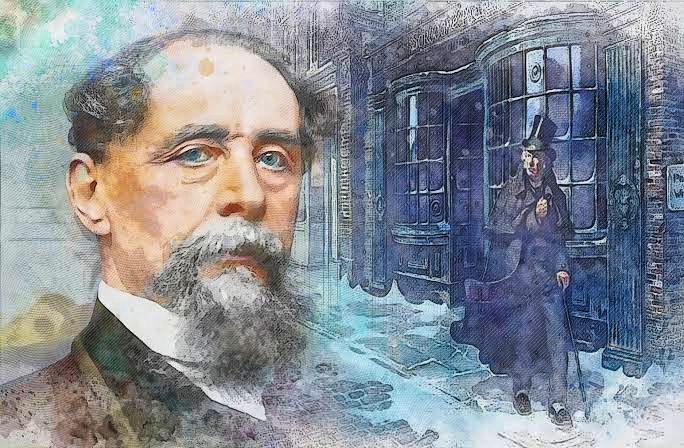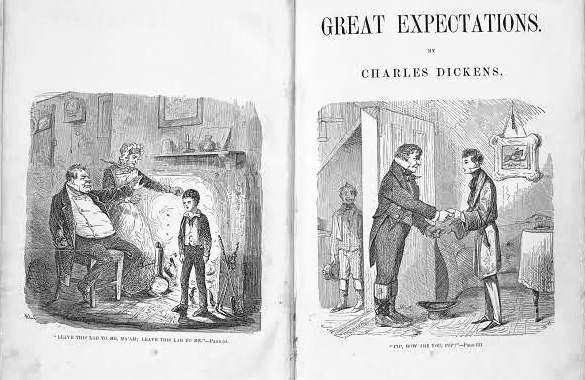In Great Expectations, Pip describes his surroundings with the wide-eyed fascination of any young boy. Discuss.

Pip’s description of the surroundings with wide-eyed fascination of any young boy.
In Charles Dickens‘s Great Expectations, the protagonist, Pip, is a young boy who is both naive and curious. Throughout the novel, Pip describes his surroundings with wide-eyed fascination, often highlighting the beauty and wonder of the world around him. In this essay, we will explore the ways in which Pip’s descriptions of his surroundings reflect his youthful perspective and contribute to the overall themes of the novel.
One of the key aspects of Pip’s descriptions is his focus on the natural world. He often observes and describes the landscapes around him, marveling at their beauty and intricacy. For example, when he visits Satis House for the first time, he describes the garden as “full of flowers and bees,” and notes how “the scent of the flowers was almost intoxicating.” Similarly, when he visits the marshes, he notes the “wilderness” of the landscape and the “strange, melancholy, and moody” atmosphere.
These descriptions reflect Pip’s youthful fascination with the natural world. As a young boy, he is still discovering the beauty and complexity of the world around him, and he is filled with wonder at the sights, sounds, and smells that surround him. Furthermore, his descriptions of the natural world serve to contrast with the darker, more oppressive aspects of his life. The beauty of the natural world stands in stark contrast to the poverty and injustice that Pip experiences in his daily life, highlighting the tension between innocence and experience that is central to the novel.
Another important aspect of Pip’s descriptions is his focus on people and their physical characteristics. Pip is often preoccupied with appearance and social status, and he describes people in terms of their physical features and clothing. For example, when he first meets Estella, he notes her “cold, haughty, and disdainful” expression, and comments on her “rich and beautiful” clothing. Similarly, when he visits London for the first time, he is struck by the “splendid” clothes worn by the upper classes, and notes how they “flaunted their wealth and luxury in the eyes of the working people.”
These descriptions reflect Pip’s desire to fit in with the upper classes and his fascination with the trappings of wealth and social status. As a young boy from a humble background, Pip is acutely aware of the class differences that separate him from the upper classes, and he is drawn to the opulence and refinement that they embody. Furthermore, his descriptions of people’s appearances and clothing serve to highlight the superficiality of the social order, and the ways in which people are judged based on their outward appearance rather than their inner qualities.
Finally, Pip’s descriptions are often infused with a sense of longing and yearning. He is a young boy who is searching for his place in the world, and his descriptions reflect his desire for something more than the life that has been prescribed for him. For example, when he first encounters the convict in the marshes, he is struck by the man’s “miserable” appearance, but also by his “wild and savage” freedom. Similarly, when he first meets Estella, he is drawn to her beauty and sophistication, but also to the mystery and uncertainty that surrounds her.
These descriptions reflect Pip’s desire for adventure, for something beyond the narrow confines of his daily life. As a young boy, he is restless and yearning for something more, and his descriptions reflect his search for meaning and purpose. Furthermore, his descriptions of the people and places around him serve to highlight the tension between his inner desires and the expectations of society. Pip is torn between his own aspirations and the demands of the social order, and his descriptions reflect this tension and conflict.
In conclusion, Pip’s descriptions in Great Expectations reflect his youthful perspective and his search for meaning and purpose in a world that is both beautiful and harsh. His fascination with the natural world, his preoccupation with appearance and social status, and his sense of longing and yearning all contribute to the overall themes of the novel, which explore the tension between innocence and experience, the superficiality of social class, and the search for identity and belonging. Through his descriptions, Pip offers a unique perspective on the world around him, capturing both its wonder and its complexities.
*****
Read More: Great Expectations by Charles Dickens

